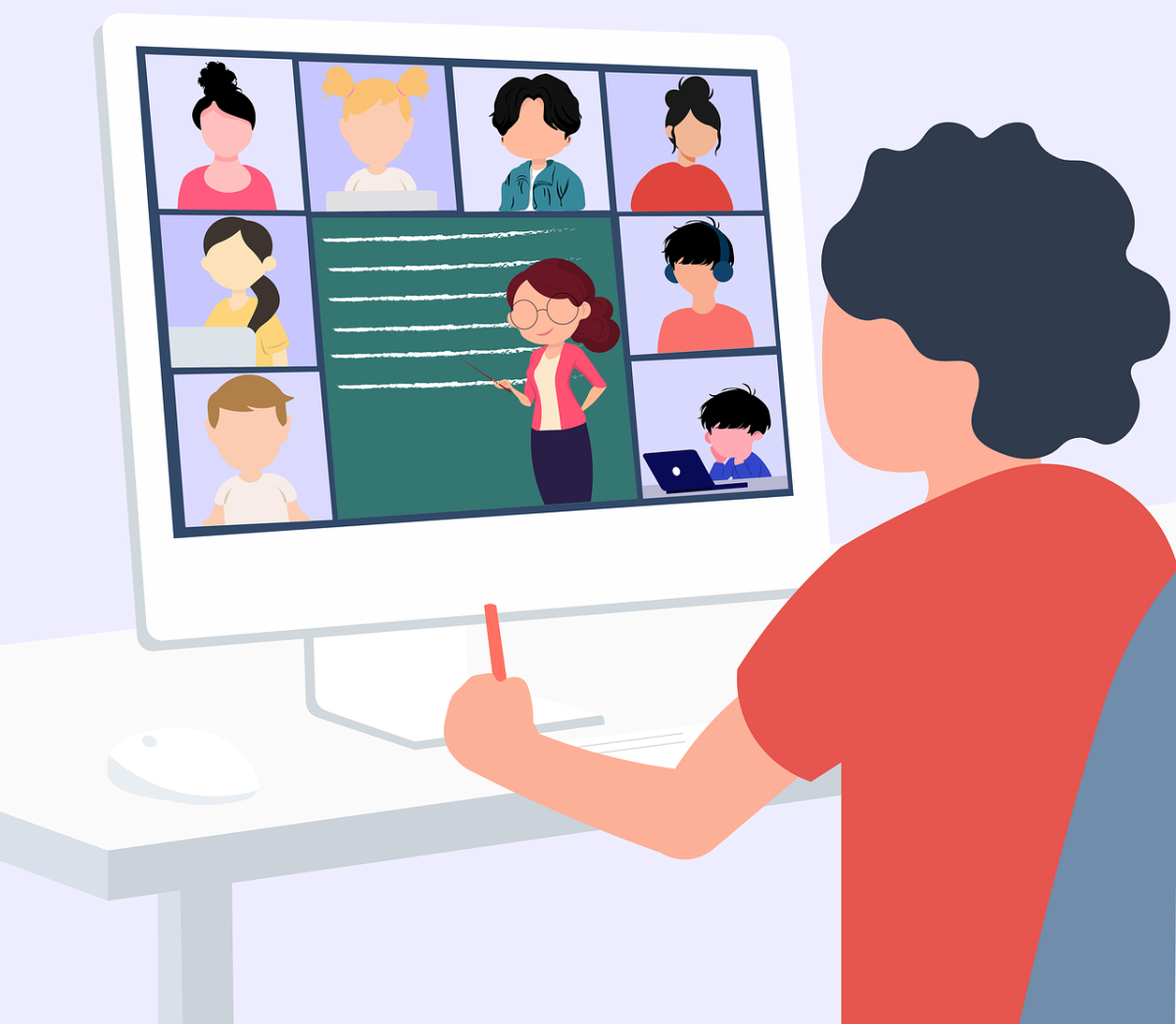Faculty discuss challenges of online instruction
Faculty and students have been doing online learning for almost a year. Faculty members enjoy the online interaction they have with their students in their synchronous classes.
Online learning can be challenging for students and faculty members. However, some faculty say they’ve enjoyed teaching synchronous classes, which meet in real time online because of the interaction they have with their students.
English Professor Trang Abeid, Film and Media Studies Professor Adam Wadenius and Biology Professor Eli Carlisle talked about their synchronous classes on Zoom and how they’re making online instruction work for their students.
“I think students do better through synchronous,” Abeid said. “When I did not meet with my students, it was hard to make a connection with them and that’s one of the things that’s very different.”
Abeid said she taught her English class online asynchronously, which did not have scheduled class times last semester, but has now switched to teaching her class synchronously, which was an improvement and students have benefitted through synchronous learning.
“I really enjoy the one-on-one interaction with my students and just being able to remind them about assignments or meeting with them,” Abeid said. “They motivate me to work harder and it gives me a human connection.”
Abeid explained her synchronous classes can be a challenge because some of the students’ cameras are off and they don’t participate as much.
“If I ask a question and there’s no response and there’s nothing in the chat, it’s hard to tell whether or not they’re there,” Abeid said. “We need visual cues to help us as instructors to know that they’re there.”
Abeid said she responds to emails from students, which are mainly about homework assignments, and helps guide them through their assignments.
“I find they don’t read the announcements, they don’t read the assignments and I think again that’s because it’s overwhelming for students,” said Abeid. “In the virtual environment, I have to do several steps to get them to be in the right place.”
Abeid also discussed how it can be difficult for her students to access Zoom and have online interactions with them if they aren’t familiar with the features of Zoom.
“I still miss that personal interaction,” Abeid said. “I feel Zoom is not the same as that human interaction.”
Wadenius said he is teaching his film class synchronously and asynchronously this semester. Aside from his asynchronous classes, he meets with his students twice a week on Zoom and on days they don’t meet, they work on their assignments.
“What I’ve tried to do in my synchronous courses is build a little bit of freedom for students to be able to go in and access the materials I’ve pre-recorded in the canvas modules,” Wadenius said. “It gives students a chance to work asynchronously almost on a lot of the material, but then we also have synchronous meetings where we talk about the material doing the analysis.”
Wadenius said he structured his three-hour block class differently on Zoom than how he would usually have it on campus.
“I want students to have access to everything I say or do, so that’s why I’ve moved everything to shorter film clips,” Wadenius said. “When we come in and do the Zoom sessions, I use maybe two or three clips and we talk about those intimately and try to find stuff on YouTube that’s available.”
Wadenius said his students can participate however they want to on Zoom with their screens on or off or from the chatbox and he also enjoys the online interaction with them.
“I’ve gotten a whole new opportunity to choose new examples and show different things and do more analysis with different things,” Wadenius said. “I’m prepped with the semester with everything.”
Carlisle said his Zoom instruction for his synchronous biology class has been good so far, but the social interaction for his students can be difficult because they do lab work and have lab groups.
“Many of my assignments during labs would’ve been group assignments and so now they’re having to do those on their own because they can’t necessarily coordinate with their lab mates,” Carlisle said.
Carlisle discussed how it can be a struggle trying to share his Zoom screen online with his students.
“I go through PowerPoints or I draw things and sometimes it’s unstable enough that I can’t really do that part, but I still talk to them,” said Carlisle. “It can be disruptive for me when I’m presenting that information.”
The synchronous component makes it work better for students because we get some of that interaction, Carlisle said.

